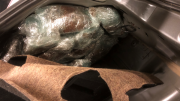Birdwatching is an increasingly popular activity and a great way to explore the outdoors. Norway boasts a wide variety of rare birds and is a great place to explore for locals and tourists alike.
Birdwatching is thought to improve your mental health, with studies suggesting that it can lessen the effects of stress, anxiety, and depression.
Whether the birds are causing this effect, or if it is simply due to spending time outdoors, is up for debate. However, it certainly adds to the many reasons why birdwatching can be a fun and rewarding activity.
The concept is quite simple – you go outside, look for birds and try to identify them. Chances are that the more birds you spot, the more you will want to continue searching!
Vast landscapes
Norway’s vast landscapes make it the ideal place to go birdwatching. If you are searching for a place to go birdwatching without too many other people around, look no further!
Norway is the natural home to around 300 of the world’s approximately 9,000 bird species. In addition to this, there are around 200 rare bird species that can be found here during certain times of the year.
Due to the vast Norwegian coastline and largely untouched nature, birdwatching can be performed all over the country.
Birdwatching in the arctic
Along the coast, a large number of seabird colonies reside. For large colonies of the iconic Atlantic Puffins, islands such as Runde and Røst are excellent destinations.
Northern Norway has a variety of arctic bird species, making it a popular destination among bird enthusiasts.
In fact, the region is home to the biggest population of White-tailed Eagles in Europe!
In particular, the Varanger Peninsula in Finnmark county is known for its wide variety of rare birds that are seldom seen in the rest of Norway and Europe.
It is known as one of the world’s most accessible arctic birding destinations, and houses birds such as the Harlequin Duck, Great Spotted Eagle, Stilt Sandpiper, Bridled Tern, and White-winged Lark. The list goes on!
However, you don’t have to travel to remote areas of Norway in order to catch sight of interesting birds. Both Oslo and Bergen, the two largest Norwegian cities, have plenty of opportunities for birdwatching right outside the city centers.
When to go
When it comes to birdwatching in Norway, every season carries with it different bird species.
In the summertime, popular destinations such as Hardangervidda, Dovrefjell, and Fokstumyra can boast a wide variety of birds such as the Red-necked Phalarope, Shore Lark, and Bluethroat.
During the autumn, the Lista peninsula in the South of Norway is considered one of the best places to go birdwatching.
In the winter there are bird watching tours being arranged despite the cold. During the spring, the coastal areas are thriving with millions of birds. Furthermore, wetlands and marches also thrive during this time of year.
Things to remember
There are a few golden rules when it comes to birdwatching in Norway.
Firstly, it is important to respect both nature and animals. A popular saying is to leave nature the way you want to find it – that is, be mindful of not disturbing the peace or littering.
Norwegians are passionate about nature and consider it a joint task to keep it as clean and tidy as possible.
A good resource for birdwatching in Norway is artsobservasjoner.no, where people will report what species they have observed all over the country.
Source: #Norway Today / #NorwayTodayTravel
Do you have a news tip for Norway Today? We want to hear it. Get in touch at [email protected]




Be the first to comment on "Birdwatching in Norway: A beginner’s guide"